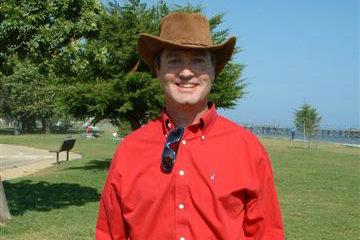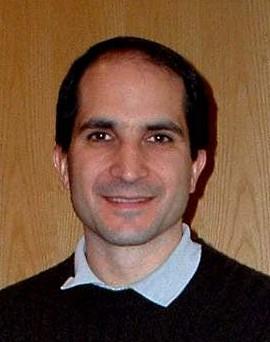As the study of quantum physics progresses, and as scientists discover more about black holes, dark matter, dark energy, and other cosmic phenomena, it becomes increasingly difficult to make it all fit with the current understanding of gravity.
Sir Isaac Newton took the first big step in forming the understanding of gravity science has today. Albert Einstein’s relativity theory, which viewed gravity as a consequence of a space-time curvature, took the next big step in shaping this understanding.
Together, Newton and Einstein formed the understanding science has of this force.
Here is a look at the problems related to gravity highlighted by nine scientists, as well as alternative theories.
1. Thomas Townsend Brown: A Machine That Defies Gravity?
Thomas Townsend Brown (1905-1985) was a physicist who conducted research for the U.S. Navy and National Defense and later worked as a consultant in the aircraft industry.
He created a machine, patented as “the gravitator,” that he said defied gravity—and which some scientists to this day say defied gravity. Affected by a high-voltage charge, it moved contrary to how it should within the current understanding of gravity.
In his patent application, Brown said it operates in a resting state in relation to the rest of the universe. This defies Albert Einstein’s special relativity theory, which dictates that a force should operate in the same manner to any frame of reference. The gravitator is also said to have violated Sir Isaac Newton’s third law of physics that every action should produce an equal and opposite reaction.
In 1930, Colonel Edward Deeds wrote: “I have had a number of scientists view the gravitator and they have all been absolutely amazed at its action, frankly stating that whereas they see the results and the movements of the gravitator, it is absolutely unexplainable by any laws of physics that they know.”
Some have said the gravitator’s movements are directed by an ion wind—that ionized particles create the force. Paul A. LaViolette is among the scientists who disagree with the ion-wind explanation.
“Measurements of thrust indicated that the force lifting Brown’s electrified disc was almost 100 million times greater than what could reasonably be generated by an ion wind,” LaViolette wrote in his book “Secrets of Anti-Gravity Propulsion.”
2. Paul A. LaViolette: Government Secretly Building Anti-Gravity Aircraft?
LaViolette received his Ph.D. from Portland State University and is currently president of the Starburst Foundation, an interdisciplinary scientific research institute. He wrote in his book: “For the past several decades, highly classified aerospace programs in the United States and in several other countries have been developing aircraft capable of defying gravity. One form of this technology can loft a craft on matter-repelling energy beams. This exotic technology falls under the relatively obscure field of research known as electrogravitics.”
LaViolette traced this field of research back to Nikola Tesla in the 19th century and then to Brown in the first half of the 20th century. In Brown’s theories, electrostatic and gravitational fields are combined, explained LaViolette.
The electrogravitic effect is ignored “because the phenomenon isn’t anticipated by either classical electrostatics or general relativity,” wrote LaViolette.
He goes on to discuss subquantum kinetics, which views gravity as both a push and a pull. This is possible through electric charge polarity. This polarity correlates to negative and positive gravitational forces.
3. NASA on Dark Energy

This composite image shows the distribution of dark matter, galaxies, and hot gas in the core of the merging galaxy cluster Abell 520, formed from a violent collision of massive galaxy clusters. (NASA, ESA, CFHT, CXO, M.J. Jee at the University of California, and A. Mahdavi at San Francisco State University)
Scientists know the universe is expanding at an increasing rate. They say “dark energy” is the force behind this expansion. They don’t know what “dark energy” is, but it may defy Einstein’s theory of gravity.
A NASA paper describing dark energy says one possibility “is that Einstein’s theory of gravity is not correct.”
“That would not only affect the expansion of the universe, but it would also affect the way that normal matter in galaxies and clusters of galaxies behaved,” the paper states. “This fact would provide a way to decide if the solution to the dark energy problem is a new gravity theory or not: we could observe how galaxies come together in clusters. But if it does turn out that a new theory of gravity is needed, what kind of theory would it be?”
ALSO SEE: Immense Force Changing Cosmos—Baffled Scientists Rethink Current Paradigm
4. Tom Van Flandern: A Problem With the Speed of Gravity
Tom Van Flandern (1940-2009) received his Ph.D. in astronomy from Yale University in 1969. He did not fully reject general relativity, but he did say the theory had problems. Einstein’s theory “was incomplete rather than wrong,” he wrote in “The Speed of Gravity—What the Experiments Say,” published in Physics Letter A in 1998.
He questioned the understanding of the speed of gravity. In Sir Isaac Newton’s Universal Law of Gravitation, the speed of gravity is infinite, Van Flandern explained. But in general relativity theory, gravity moves at the speed of light. Van Flandern said this conflict is often skirted around in academia.
“The same dilemma comes up in many guises,” he wrote. “Why do photons from the sun travel in directions that are not parallel to the direction of Earth’s gravitational acceleration toward the sun? Why do total eclipses of the sun by the moon reach maximum eclipse about 40 seconds before the sun and moon’s gravitational forces align? How do binary pulsars anticipate each other’s future position, velocity, and acceleration faster than the light time between them would allow? How can black holes have gravity when nothing can get out because escape speed is greater than the speed of light?”
He proposed a new way to understand the speed of gravity.
5. William H. Cantrell Says Einstein’s Logic is Circular

William H. Cantrell, Ph.D., is a member of the technical staff at the MIT Lincoln Laboratory. He was formerly an adjunct assistant professor in the electrical engineering department at the University of Texas.
He presented a dissident view of relativity theory in the magazine Infinite Energy, published by the non-profit organization New Energy Foundation (NEF).
The touted successes of Einstein’s theory, such as nuclear fission in the atomic bomb, do not actually rely on his theory, Cantrell said. The atomic bomb could go off without relativity theory.
Cantrell wrote: “It is undoubtedly a fact that relativity theory had a profound impact on physics during the 20th century. Einstein’s theory is celebrated the world over for having produced a series of brilliant successes. Nevertheless, there is a sizeable community of dissident scientists who reject it outright, and a far larger group, unaware of an alternative, who harbor a pronounced distaste for it.
“This dislike stems from the fact that Einstein borrows from the mathematics of Lorentz and Poincaré, and this allows him to modify length and time measurement to force the speed of light to be constant for all observers.
“Given a clear alternative to tampering with the fundamentals, most rational thinkers would jump at the chance for a substitute. But why challenge such a supposedly successful theory? Well, for two very good reasons—first, to truly understand and describe how nature works, and second, to achieve new breakthroughs, once an unintentional roadblock to progress has been removed.”
Cantrell and other scientists have said the logic of Einstein’s theory is circular. He illustrated this point with an analogy. He said one could hypothesize that “the Earth has a twin moon made of a special green cheese that is perfectly transparent to illumination.”
“Obviously this is nonsense, but by its own design, the statement cannot be refuted by experiment. We find ourselves in a similar predicament when it comes to Einstein’s relativity.”
6. Ruggero Maria Santilli: Relativity Butts Heads With Quantum Electrodynamics
Ruggero Maria Santilli was educated at the University of Naples and the University of Turin in Italy and was a visiting scholar at Harvard University before founding the Institute of Basic Research. Santilli presents nine inconsistencies between Einstein’s general relativity theory and current scientific understandings. Some of these inconsistencies pose problems for the conventional understanding of gravity.
One such inconsistency is that Einstein’s gravitation cannot be essentially reconciled with quantum electrodynamics, said Santilli in his 2006 paper “Nine Theorems of Inconsistency in GRT with Resolutions via Isogravitation."
“Remembering that quantum electrodynamics is one of the most solid and experimentally verified theories in scientific history, it is evident that the rather widespread assumption of Einstein’s gravitation as having final and universal character is non-scientific,” he wrote.
Santilli’s paper was published in the journal Galilean Electrodynamics, founded by Dr. Petr Beckmann, who reinterpreted relativity in his 1987 book “Einstein Plus Two.”
The journal publishes articles that challenge Einstein’s general and special relativity theories. Its editorial policy states: “In particular, the journal seeks papers arguing that Einstein’s theories are needlessly complicated, have been confirmed only in a narrow sector of physics, [and] lead to logical contradictions ...”
Tom Bethell
Tom Bethell is not a scientist, but he has researched alternative theories extensively as a senior editor at the American Spectator. In his article “Rethinking Relativity,” he wrote: “A criterion of simplicity has frequently been used as a court of appeal in deciding between theories. If it is made complex enough, the Ptolemaic system can predict planetary positions correctly. But the Sun-centered system is much simpler, and ultimately we prefer it for that reason.”
He quoted Clifford M. Will of Washington University, a leading proponent of relativity: “It is difficult to imagine a life without special relativity. … Just think of all the phenomena or features of our world in which special relativity plays a role. Atomic energy, both the explosive and the controlled kind. The famous equation E=mc2 tells how mass can be converted into extraordinary amounts of energy.”
Bethell drew attention to the predicate “plays a role.” Bethell wrote, “[Will] knows that the stronger claim, ‘is indispensable,’ would be pounced on as inaccurate.”
7. Joseph Polchinski: Questions Assumptions

Joseph Polchinski (Lubos Motl)
Joseph Polchinski, a theoretical physicist at the Kavli Institute for Theoretical Physics at the University of California, Santa Barbara, discussed the idea of gravity in relation to black holes. Einstein’s theory dictates that black holes have an extremely strong gravitational pull.
Famed scientist Stephen Hawking said in the 1970s that matter can leak out of black holes, setting up a paradox.
As mentioned earlier, Van Flandern wondered, if gravity moves at the speed of light, “How can black holes have gravity when nothing can get out because escape speed is greater than the speed of light?”
Polchinski told PBS in February after Hawking discussed some new theories on black holes: “It’s not so much that there’s a mistake, but somehow, some assumption that we believe about quantum mechanics and gravity is wrong, and we’re trying to figure out what it is.”
“It’s confusion, but it’s confusion that we hope makes us ripe for advance,” he said.
8. Eric Verlinde: ‘Bad Hair Day’ Theory of Gravity

Professor Eric Verlinde is a string theorist and a professor of physics at the Institute of Theoretical Physics at the University of Amsterdam.
He views gravity as a consequence of the laws of thermodynamics, influenced by factors such as temperature, pressure, and composition. Gravity as we perceive it—the apple falling from the tree, for example—arises out of nature’s propensity to maximize disorder.
A 2010 New York Times article described it as a “bad hair day” theory of gravity. Hair becomes frizzy in heat and humidity because there are more ways for hair to be curled than to be straight, and nature likes options. Similar principles work on objects to arrange them in space, according to Verlinde.
“We’ve known for a long time gravity doesn’t exist,” Dr. Verlinde told the Times, “It’s time to yell it.”
9. Juan Maldacena: ‘Einstein’s Theory Should Be Replaced With Something Quantum Mechanical’

Juan Maldacena (Wikimedia Commons)
In 1997, theoretical physicist Juan Maldacena, who is now at the Institute for Advanced Study in Princeton, N.J., further developed a theory that views the universe as a world of very thin, vibrating strings. Put simply, these strings create gravity. The world of strings is understood as a hologram projected from a lower-dimensional cosmos, one that is simpler, flatter, and without gravity.
In an interview posted by educational resource website Learner.org, Maldacena said: “We think that general relativity or Einstein’s theory should be replaced by something quantum mechanical when you reach these points like the beginning of the Big Bang, for example, or the interior of the black holes you also have a similar example of matter collapsing in a very small region of space-time and there you cannot describe space-time classically. You have to do it using quantum mechanics. String theory is a theory under construction that has been developed to describe quantum mechanical space-time.”
*Image of man jumping rope via Shutterstock





